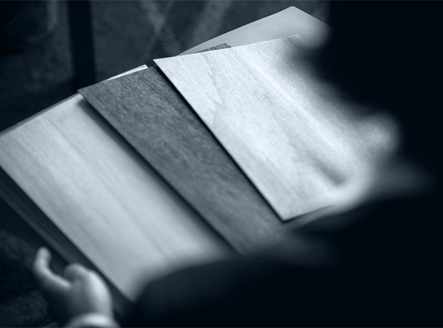1. Recognize the difference between artificial thin wood veneer and natural wood veneer veneer: the former has a basic straight texture with regular patterns; The latter is a natural wooden pattern with a high degree of variability and irregularity in texture patterns.
2. Good decorative quality: The decorative panel should have a good aesthetic appearance, with fine and uniform material, clear color, and beautiful wood grain. The texture of the matching board and patchwork should be arranged in a certain pattern, with similar wood color and almost parallel seams and board edges.
3. The surface should have no obvious defects: the selected decorative panel surface should be smooth, free of burrs, hook marks, and planer marks; There should be no glue penetration phenomenon (such as local blackening or yellowing); Try to choose surfaces without cracks, fissures, skin inclusions, resin pockets, and gum channels; The natural curvature of the entire board should be minimized to avoid sand penetration caused by improper sanding process operation of the substrate.
4. The adhesive layer structure is stable and there is no cracking phenomenon: attention should be paid to the absence of bulges or delamination between the surface veneer and the substrate, as well as between the layers inside the substrate.
5. Knife pry method for testing adhesive strength: This method is the intuitive way to test adhesive strength. Use a sharp flat blade to pry open the adhesive layer. If the adhesive layer cracks and the wood is damaged, it indicates poor bonding strength.
6. To choose boards with low formaldehyde emissions: When selecting, avoid decorative boards with irritating odors. Because the stronger the odor, the higher the amount of formaldehyde released, the more severe the pollution, and the greater the harm.
7. Choose products with clear manufacturing companies: The vast majority of products with clear factory names, addresses, and trademarks have reliable performance.

 英语
英语 中文简体
中文简体






